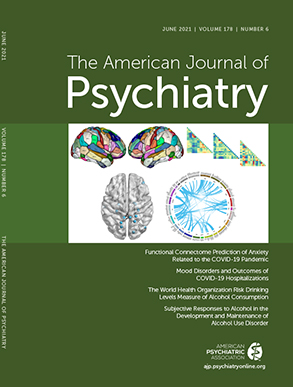To the Editor: We read with interest the commentary “Understanding the Clinical Effects and Mechanisms of Action of Neurosteroids” by Kleinman and Schatzberg, published in the March 2021 issue of the
Journal (
1). We welcome the opportunity to provide additional commentary based on pharmacological and clinical data.
The authors correctly point out that the neuroactive steroids brexanolone and zuranolone are thought to exert activity primarily through positive allosteric modulation of the GABA
A receptor. However, it is inaccurate to characterize the antidepressant activity of these molecules as analogous to that of benzodiazepines. We encourage readers to review for themselves the literature detailing the unique pharmacology, receptor trafficking activity, receptor signaling, and physiology of neuroactive steroids (
2–
6). Briefly, benzodiazepines act only at gamma subunit–containing synaptic GABA
A receptors (
7). In contrast, neuroactive steroids are positive allosteric modulators at both synaptic and extrasynaptic GABA
A receptors, potentiating both phasic and tonic currents, respectively (
2–
4,
8–
11). In vitro, zuranolone potentiated phasic GABA
A currents synergistically with diazepam, consistent with the noncompetitive activity and distinct binding sites of the two compound classes (
4). Neuroactive steroids can also enhance GABAergic signaling by increasing the surface expression of GABA
A receptors (
4,
12–
14), unlike the decreased GABA
A receptor surface expression reported with benzodiazepines (
15). Finally, antidepressant-like actions of a neurosteroid tool compound (SGE-516) were not observed with a benzodiazepine in animal studies (
6). Moreover, as an important clarification, data do not suggest that postpartum depression is caused by abnormal hormone levels. As such, neuroactive steroids do not correct a hormonal deficiency in postpartum depression but instead may act by stabilizing dysregulated hyperexcitable neuronal networks (
4,
6,
10).
The authors also question the durability of response with neuroactive steroids. Following a rapid onset of action, separating from placebo within 2–3 days of dosing, sustained responses were observed with brexanolone in patients with postpartum depression for up to 30 days (
16,
17). With a similarly rapid onset, sustained efficacy responses were observed for patients with postpartum depression and major depressive disorder treated with zuranolone (
18–
20). In addition, interim open-label data indicate that approximately 70% of patients receiving 30 mg of zuranolone required only one or two 14-day treatments through a 1-year follow-up (
20).
Finally, the authors speculate on how tolerance or withdrawal could potentially interact with clinical outcomes and call for understanding the human abuse potential of neurosteroids (especially for zuranolone, which is in late-stage clinical development). We agree that comprehensive assessments for tolerance and dependence are necessary. These important assessments are being closely monitored throughout the zuranolone clinical development program. In an ongoing uncontrolled study of patients with major depression over a 1-year period, tolerance and withdrawal have not emerged clinically when using 30 mg of zuranolone for 14-day periods in retreatment; additional data on the use of 50 mg of zuranolone are currently being collected (
20).
In conclusion, we hope our description of some of the important differences between benzodiazepines and neuroactive steroids is helpful. We appreciate the opportunity to respond, and we encourage readers to review the extensive literature on neuroactive steroids, benzodiazepines, and other GABAergic agents so that clinicians are fully informed about potential therapeutic options.

